Are you just starting out your restaurant business?
It could be a daunting road with so many things to take care of.
Having the right list of restaurant equipment is really important and can give you a good head start on your journey.
With so many options from various brands and suppliers, it can be confusing to figure out what you really need and what you don’t.
To streamline your startup experience, prioritize understanding your specific needs. Invest in equipment that aligns with your menu, service style, and space.
Think about must-haves such as top-notch kitchen appliances and effective service tools, along with tech solutions like digital menu boards, restaurant POS systems, KDS, and more. These play a crucial role in ensuring smooth operations and boosting sales.
This targeted approach not only simplifies decision-making but also ensures you invest wisely, avoiding unnecessary expenses.
A Complete Restaurant Equipment List
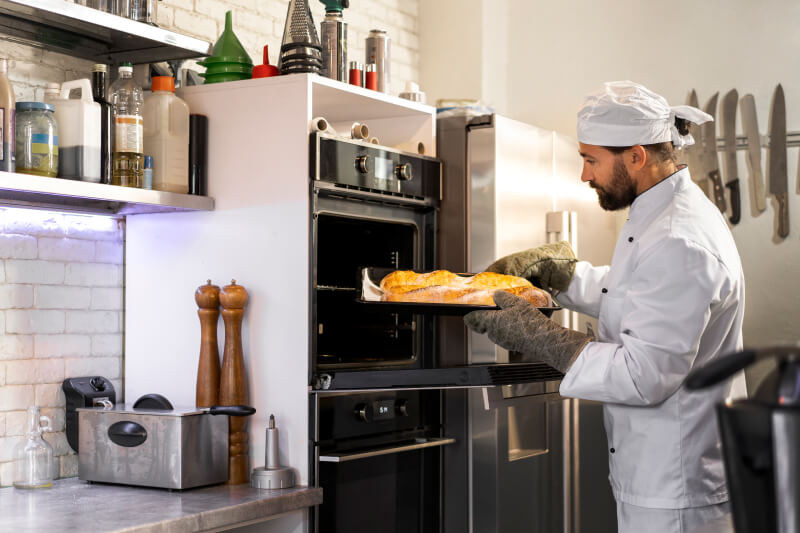
1. Cooking Equipment
The right cooking equipment is the best start to your checklist. Your kitchen staff can focus on preparing some mouthwatering food with the correct equipment.
Make sure to take care of the below in your list to get it right:
Ovens: Ovens are indispensable for baking and roasting a diverse array of dishes. Available in various types, including convection ovens that utilize fans for uniform cooking, deck ovens for simultaneous baking of multiple items, and conveyor ovens for swift and consistent preparation of foods like pizzas.
Grill: Grills are crucial for adding a unique smoky flavor to dishes, achieved by cooking over an open flame or heat source. They come in various types—gas, charcoal, or electric—and are versatile tools for grilling meats, veggies, and even fruits.
Deep Fryer: Deep fryers are used to fry foods in hot oil, creating tasty and crispy dishes such as French fries, chicken, and fish. They come in different sizes and setups, with countertop models for smaller operations and floor models for larger quantities.
Microwave: Microwaves are convenient for rapidly heating and cooking food. They excel at reheating dishes and quickly preparing meals. Commercial microwaves are powerful and offer various settings to cook large quantities of food efficiently.
Steamers: Steamers cook food with steam, keeping the nutrients and flavors yummy. This restaurants equipment come in big and small sizes and are good for making veggies, seafood, and rice.
Broilers: Broilers cook food with intense, direct heat, giving them a tasty, caramelized crust. They’re great for making dishes like steaks, fish, and veggies, and they come in different sizes for various amounts of cooking.
Griddles: Griddles give you a flat space to cook things like pancakes, eggs, burgers, and sandwiches. They come in different sizes, with gas, electric, or countertop choices, and some have different temperature zones for cooking different things.
2. Food Preparation Equipment
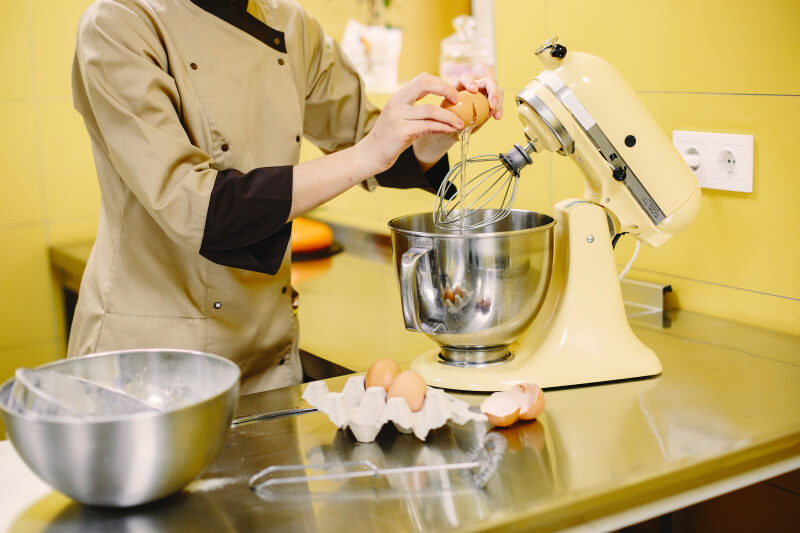
Having the right tools for food prep is crucial for a smooth cooking process.
Here’s a breakdown of essential equipment:
Food Processors: Big food processors act like kitchen robots in restaurants. They quickly chop, slice, and mix ingredients, ensuring consistency during busy times.
Mixers: Mixtures are essential for uniform mixtures in a commercial kitchen. Standing floor mixers handle large batches, while countertop mixers are great for limited space.
Peelers: Essential in a busy kitchen for quickly removing skins from fruits and vegetables. Speeds up prep and reduces food waste.
Cutlery and Knives: Top-notch knives are vital in a commercial kitchen. Chef’s knives, paring knives, and serrated knives are crucial for precise cutting and chopping.
Slicers: Used for exact slicing of meats, cheeses, and other foods. Available in manual or automatic, with adjustable blade sizes for thick or thin slices.
Cutting Boards: Crucial in a busy kitchen for protecting surfaces and maintaining cleanliness. Provides a secure base for chopping and preparing ingredients.
Scales: Vital for precise ingredient measurement, ensuring recipe consistency. They help maintain portion sizes for a consistent dining experience.
3. Beverage Equipment
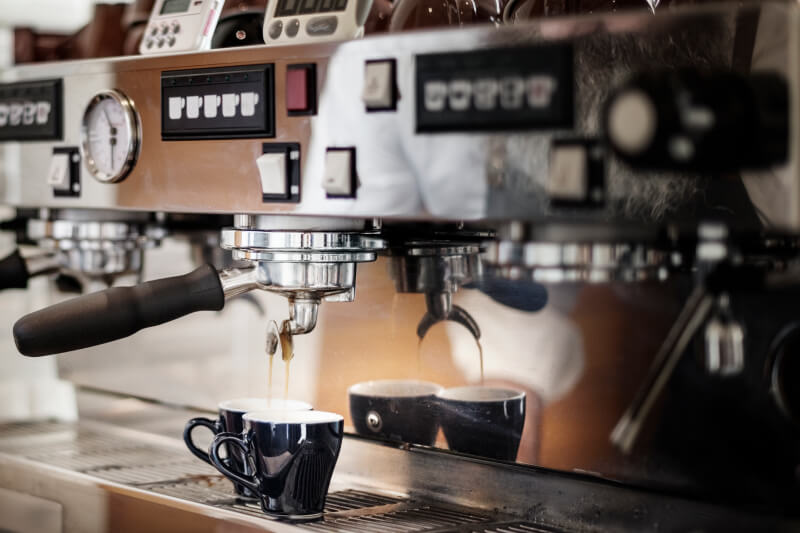
For a diverse beverage menu, you need essential beverage equipment of restaurant like coffee makers, blenders, and beverage dispensers.
Here’s a breakdown:
Coffee Makers: Coffee makers brew large quantities efficiently to cater to diverse coffee preferences. You can offer various blends and flavors according to customer tastes and preferences.
Espresso Machines: Produce high-quality espresso shots as a base for lattes, cappuccinos, and macchiatos. Expresso machines help you elevate the coffee experience with rich and bold flavors.
Blenders: Blenders are versatile tools for creating smoothies, milkshakes, and frozen cocktails. They help effectively blend and crush ingredients for a smooth and consistent texture.
Juicers: Extract fresh juices from fruits and vegetables. They help enable the offering of freshly squeezed juices and blends.
Beverage Dispensers: Beverage dispensers help with easy dispensing of iced tea, lemonade, and other flavored drinks. They help ensure convenient access for both customers and staff during service.
4. Refrigeration Equipment
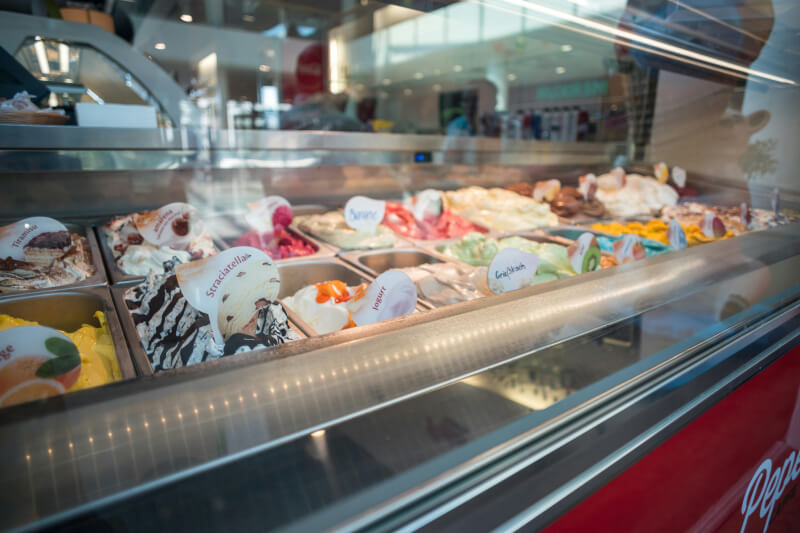
Dependable refrigeration units and freezers are essential for storing perishable ingredients and upholding food safety standards.
Here are the details for refrigeration equipment suitable for a restaurant or commercial kitchen:
Refrigerators: They come in various sizes, from walk-ins to reach-ins and help store perishables like fruits, vegetables, and dairy at controlled temperatures for freshness.
Specialized options like under-counter fridges, prep tables, and display cases cater to specific kitchen needs.
Freezers: They are a must for your kitchen. They help preserve meats, seafood, and frozen desserts for extended periods thus maintaining quality and taste over time.
Walk-in Coolers: They are larger units for bulk storage of perishables and prepared items. They help ensure optimal temperatures for a significant quantity of ingredients.
Ice Machines: These machines help produce large ice quantities for busy restaurant demands. They are essential for chilled beverages and food temperature maintenance, especially during peak hours.
Blast Chillers: They help rapidly cool hot food to safe storage temperatures. They help minimize bacterial growth, preserving dish quality and freshness and are crucial for upholding food safety standards in commercial kitchens.
5. Storage and Handling Equipment
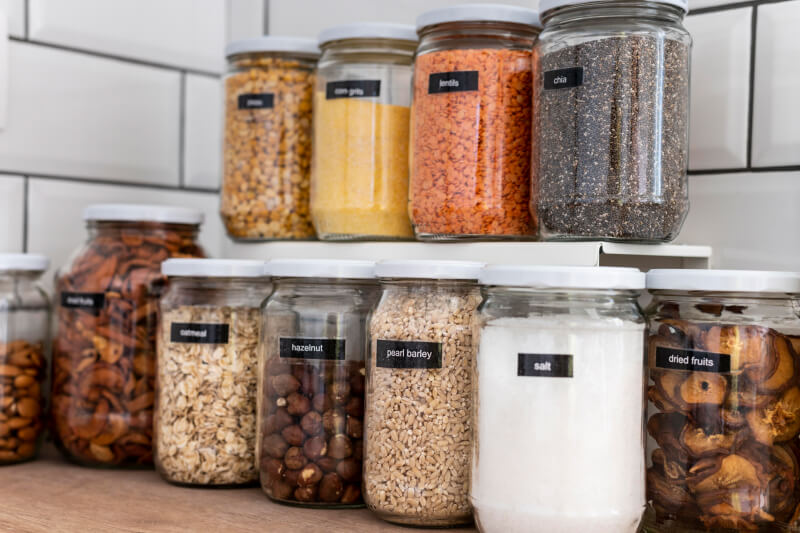
Organizational equipment like shelving units, storage containers, and carts is essential for a well-organized kitchen.
Here’s a breakdown of commonly used storage and handling gear:
Shelving Units: They are sturdy and versatile for ample storage. They are available in stainless steel, wire, or plastic, customizable to fit kitchen layouts.
Storage Containers: They come in various shapes and sizes for organized food storage. They are made of durable materials like plastic, glass, or stainless steel to maintain freshness and prevent cross-contamination.
Ingredient Bins: They are specially used in bulk storage of dry goods like flour and sugar. The airtight lids for these bins keep ingredients fresh, protected from moisture, and pests.
Racks: Racks are essential for organizing kitchen equipment in restaurant. Their types include pan racks, drying racks, and storage racks to maximize space and improve efficiency.
Carts: Carts are versatile and mobile for transporting ingredients, equipment, or dishes. These utility carts, bus carts, and serving carts come in various sizes and designs. They also come equipped with sturdy wheels for easy maneuverability, crucial for streamlining operations in a busy kitchen.
6. Serving and Holding Equipment
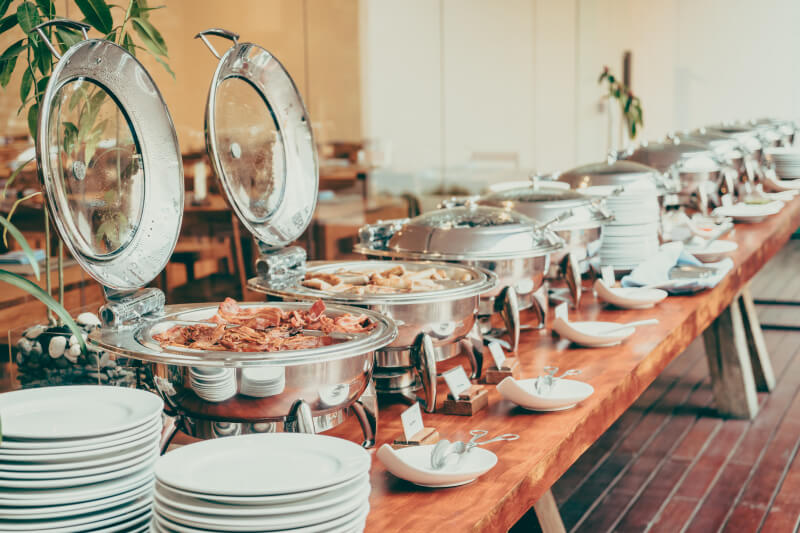
Essential items like food warmers, serving utensils, and buffet servers are key for maintaining dish quality and presentation in the restaurant industry.
Here’s a breakdown of common serving and holding equipment:
Serving Utensils: Tools like spoons, tongs, and ladles for efficient and clean food service. Available in various sizes and materials, ensuring precise and hygienic presentation.
Food Warmers: Crucial for maintaining dish temperature and quality before serving. Types of food warmers could include drawer warmers, countertop warmers, and heat lamps, preserving flavor and texture.
Heat Lamps: Keep food warm and appetizing, especially in buffets or busy hours. Emit gentle heat to prevent dishes from cooling down, maintaining optimal temperature and presentation.
Buffet Servers: Buffet servers are essential for self-service areas, organizing and displaying dishes. These configurations include chafing dishes, soup kettles, and warming trays, offering diverse and appealing food options for customers.
7. Smallware and Utensils
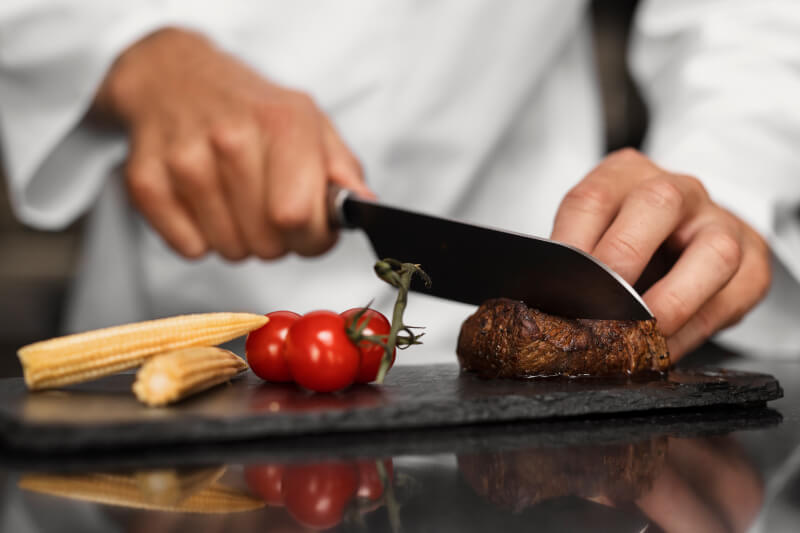
A variety of pots, pans, cooking utensils, and kitchen tools are essential for diverse cooking techniques and a smooth cooking process.
Here’s the vital list of smallware and utensils restaurant equipment:
Pots and Pans: These are essential tools for boiling, sautéing, and simmering.
They come in different sizes and materials like stainless steel, aluminum, and copper.
Baking Sheets: These sheets come in handy for baking cookies, pastries, and treats and they are available in various sizes and materials, ensuring even baking.
Cooking Utensils: Cooking utensils include so many things like spatulas, spoons, whisks, and turners for stirring, flipping, and mixing and much more. The different shapes and materials they come in ensure efficient and precise culinary work.
Chef’s Knives: No matter what, the Chef’s knives need to be sharp since they are to be used for several purposes like chopping, dicing and slicing. The different sizes and styles that they come in help them implement several cutting techniques.
Mixing Bowls: These bowls are used for combining and blending ingredients. Since they are available in different sizes and materials like stainless steel, glass, and plastic, you have a variety of options to choose from.
8. Dishwashing Equipment
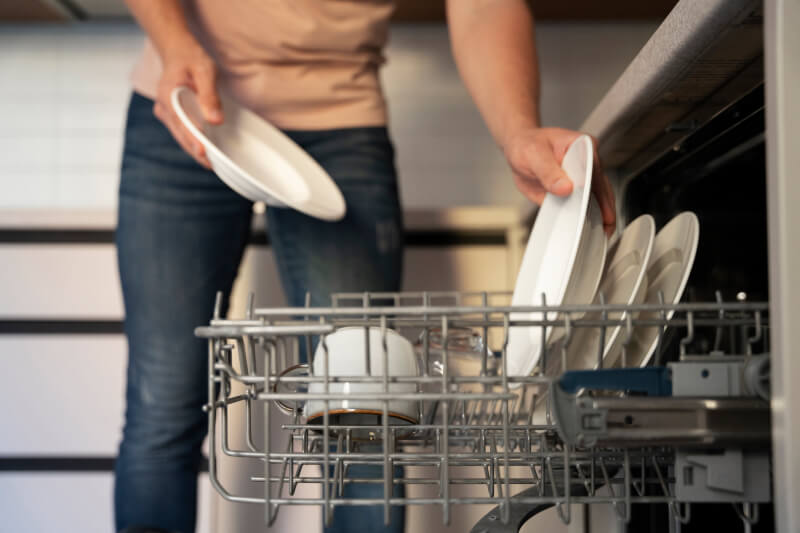
Commercial dishwashers and efficient cleaning stations are crucial for keeping dishes, utensils, and equipment spotless and ready for use.
In the realm of dishwashing, you’ll commonly find:
Commercial Dishwasher: Heavy-duty machines are designed for efficiently washing large quantities. They help make the cleaning process swift and thorough.
Dish Drying Racks: They are essential for air-drying and organizing cleaned dishes. Dish drying racks come in various sizes and configurations, providing ample space for drying and storing.
Garbage Disposal Unit: They help manage food waste by grinding it into smaller particles. Garbage disposal units are crucial for maintaining cleanliness and preventing clogs in the kitchen’s plumbing.
9. Furniture and Dining Equipment

Creating a welcoming dining area with comfortable seating, tables, and a functional cash register will be the starting point to establishing a good customer dining experience.
Here is the essential list of the furniture and dining equipment to get started:
Tables and Chairs: Vital for dining areas, available in various designs and materials. They help you accommodate different restaurant styles and layouts, providing comfortable seating and enhancing the overall ambiance.
Booths: Booths are like semi-private seating areas, offering a cozy and intimate dining experience. They are available in different sizes and configurations and are suitable for both groups as well as individuals.
Bar Stools: These unique types of stools are commonly used in bar and counter seating areas. They are perfect to help your customers enjoy their drink when seated on certain heights at the bar table.
Hostess Stands: These stands are a must for restaurants to manage reservations, welcoming guests and to take care of the sitting arrangement. They come in various styles as well as sizes.
They are designed and equipped with storage compartments and display space for menus and promotional materials.
10. Tech Equipment
With tech being very crucial for seamless restaurant operations these days.
Here are some of the tech equipment that are a must to get started:
Kitchen Display Systems (KDS): KDS is a digital display system used in restaurant kitchens to manage and organize incoming orders.
If you are running a fine dining establishment or have a huge restaurant space, you will need a KDS system for the kitchen staff to communicate with the serving staff.
The QSRs that are small can manage without them at the start but will eventually need a very robust KDS system to track orders in the kitchen.
Check out Priority1 POS’s Kitchen display system that helps you streamline your kitchen operations and focus on serving delicious food.
Point of Sale (POS) System: Essential for managing transactions, tracking sales, and handling various aspects of restaurant operations, including inventory management and employee scheduling.
Every restaurant has a different need, so make sure to select the one that works best for you. Tailored features streamline processes and improve overall efficiency.
Learn more about how the POS system of Priority1 POS helps your restaurant get ahead of the curve by improving operational efficiency and sales numbers.
Digital Menu Boards: Powerful tools for showcasing signature dishes, promotions, and categories for easy navigation.
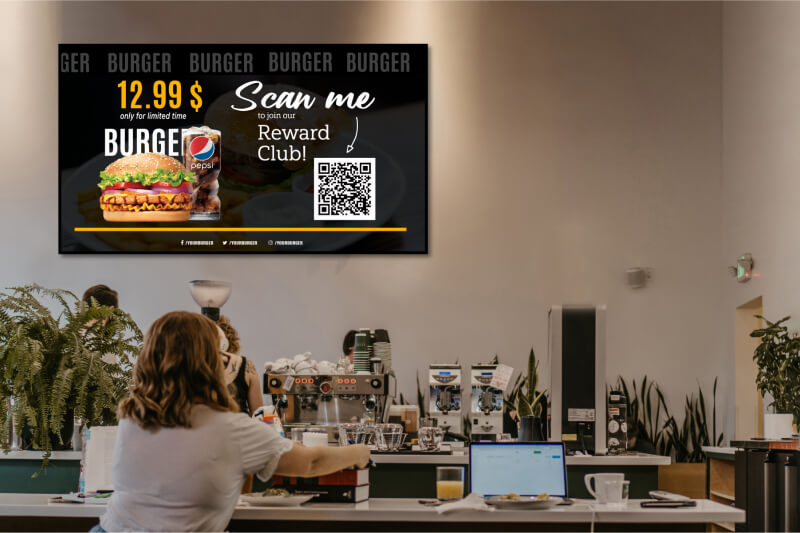
Clear pricing, dietary information, and high-quality images entice customers and build trust through restaurant information and positive reviews.
Get access to 550+ digital menu boards template with Priority1 POS’s in-built menu board editor that lets you customize your menu board templates the way you need.
Music System: Well-integrated music system sets the ambiance, creating a welcoming atmosphere for customers.
Whether through background music or live performances, a suitable music system enhances the dining experience and complements the restaurant’s theme.
Phone & Internet: Stable communication is vital for effective interactions with customers, suppliers, and staff. The phone and internet are the basic tech amenities needed for a restaurant.
11. Safety & Cleaning Equipment
Ensuring your restaurant’s safety and cleanliness is crucial. Invest in fire extinguishers, first aid kits, and cleaning supplies for smooth operations.
Fire Extinguishers: Use them to quickly control and extinguish small fires, ensuring safety from potential risks.
Fire Suppression Systems: These advanced systems automatically detect and extinguish fires in kitchens, minimizing damage and ensuring safety.
First Aid Kits: Essential for immediate medical assistance in case of minor injuries or accidents. They contain basic supplies for common injuries.
Safety Signs: Communicate important information to staff and customers. Include signs for emergency exits, fire escape routes, and safety protocols.
Camera System: Implement a comprehensive camera system to monitor premises, deter theft, and enhance security.
Alarm System: Essential for off-hours protection. Alerts authorities in case of security breaches, unauthorized access, or fire.
Mops, Brooms, and Cleaning Supplies: Vital for maintaining restaurant cleanliness. Enables efficient cleaning and sanitization for a safe and pleasant dining environment.
Checklist When Purchasing Restaurant Kitchen Equipment
Now that we have compiled the list, make sure to take care of several key factors that need to be taken into consideration while marking the checklist.
Take a quick scan of this detailed compiled list to make sure you make the right purchases and spend your budget wisely.
- Menu and Concept: Align equipment with your menu and culinary concept for efficient food preparation.
- Space and Layout: Opt for space-saving, multifunctional appliances to maximize efficiency in your kitchen’s available space.
- Capacity and Volume: Choose equipment that can handle your daily customer volume without compromising service speed.
- Energy Efficiency: Select energy-efficient appliances with certifications like ENERGY STAR to reduce operational costs.
- Quality and Durability: Invest in high-quality, durable equipment from reliable brands to prevent frequent repairs or replacements.
- Compliance and Safety Standards: Ensure equipment meets local safety codes, prioritizing appliances with safety features.
- Budget and Cost Considerations: Set a realistic budget, considering long-term benefits and potential savings in ownership costs.
- Warranty and Service Agreements: Look for equipment with comprehensive warranty coverage and clear service agreements.
- Installation & Maintenance: Consider installation requirements and plan for regular maintenance to keep equipment in top condition.
- Leasing Equipment: Explore leasing or financing options, evaluating terms, payment plans, and possible upgrades.
Conclusion:
Embarking on the journey of starting a restaurant demands a strategic and well-informed approach, particularly when it comes to acquiring essential equipment.
This comprehensive guide serves as a valuable resource, providing insights and recommendations tailored for those stepping into the dynamic realm of the culinary business.
Reach out at sales@priority1-pos.com if you are interested in learning more about our restaurant tech solutions.

 Cart is empty
Cart is empty 

